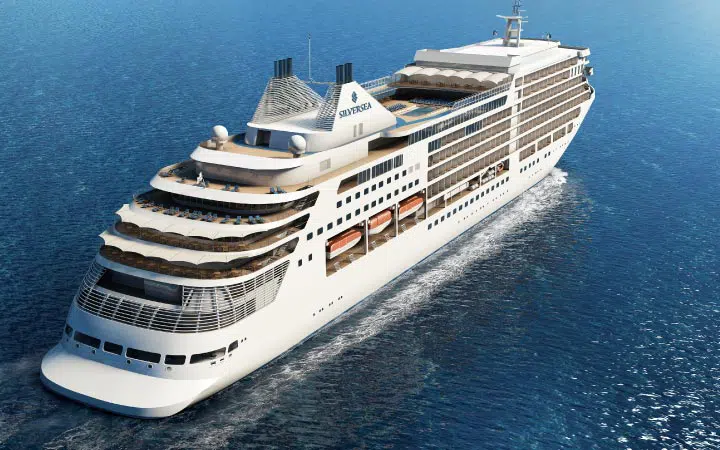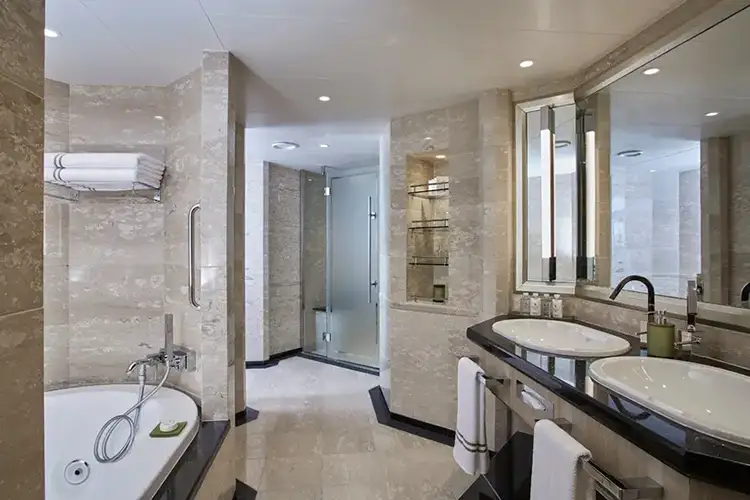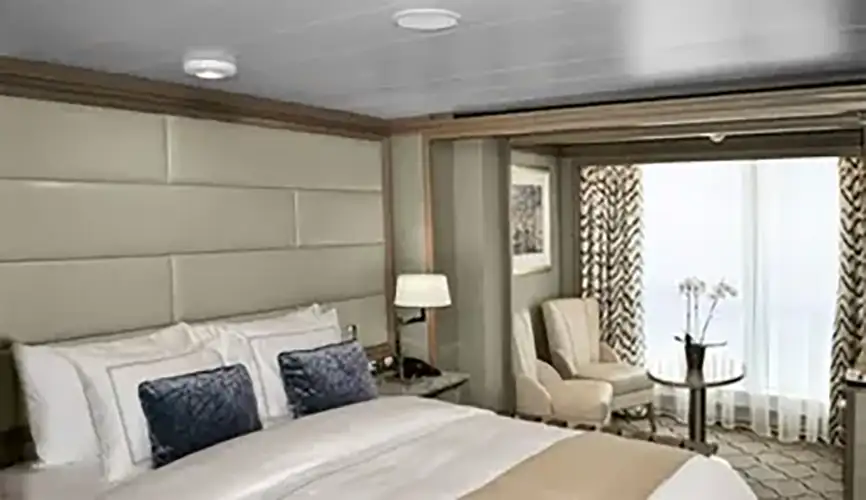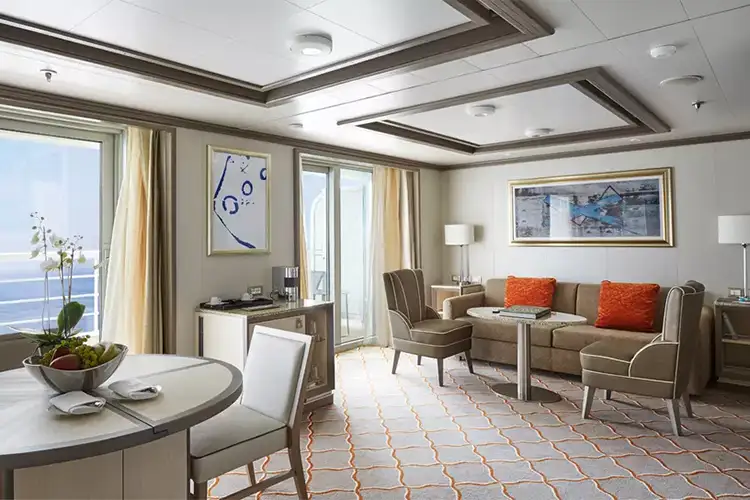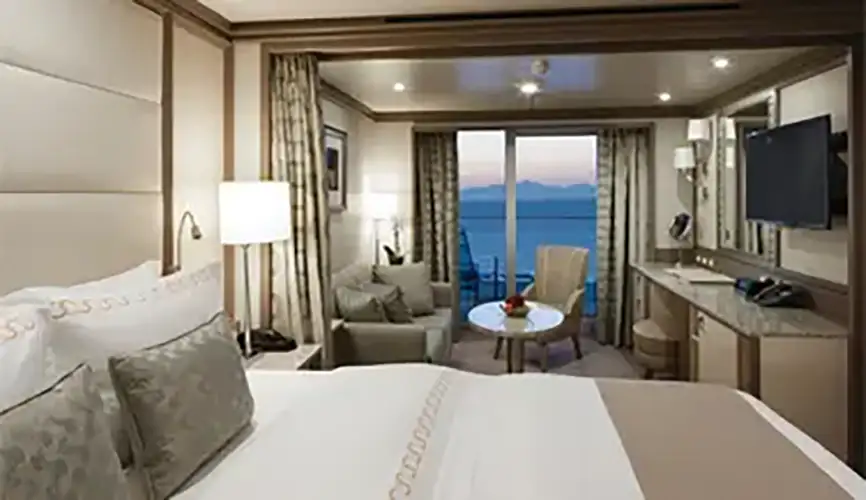Silversea Seine: 15 nights from Lisbon with Silver Dawn
May 27, 2026
Portugal, Spain, France, Denmark
Cruise itinerary
Departure Port: Lisbon ➞
Landing: Copenaghen
-
Wednesday, May 27, 2026 - 6:00 PMLisbon
-
Thursday, May 28, 2026 9:00 AM - 10:00 PMOporto
-
Friday, May 29, 2026Navigation
-
Saturday, May 30, 2026 8:00 AM - 7:00 PMBilbao
-
Sunday, May 31, 2026 5:30 PM - not foundBordeaux
-
Monday, June 1, 2026 not found - not foundBordeaux
-
Tuesday, June 2, 2026 not found - 4:45 PMBordeaux
-
Wednesday, June 3, 2026Navigation
-
Thursday, June 4, 2026 8:30 AM - 9:00 PMCherbourg
-
Friday, June 5, 2026 8:15 AM - 7:15 PMSt Malo
-
Saturday, June 6, 2026 6:30 PM - not foundRouen
-
Sunday, June 7, 2026 not found - not foundRouen
-
Monday, June 8, 2026 not found - 9:30 PMRouen
-
Tuesday, June 9, 2026Navigation
-
Wednesday, June 10, 2026Navigation
-
Thursday, June 11, 2026 7:00 AMCopenaghen
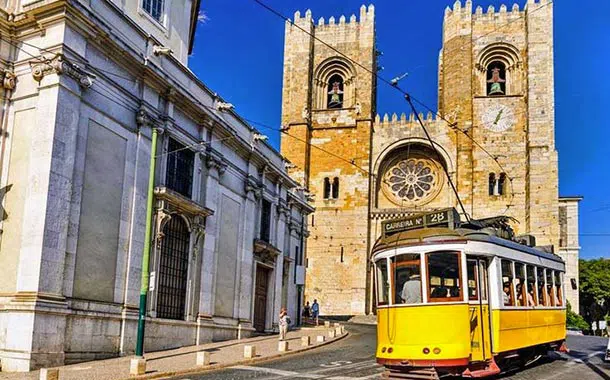
Lisbon
Perched on steep slopes overlooking the Tagus River, Lisbon offers all the pleasures you'd expect from Portugal's main attraction.
The capital of Portugal, Lisbon (in Portuguese Lisboa) has experienced a great rebirth in recent years, with a lively and flourishing contemporary culture. Perched on the coast of the Atlantic Ocean, Lisbon is one of the rare European cities that face the ocean and use water as an element that defines the city. Lisbon enchants travelers with its white limestone buildings, intimate alleys and an ancient charm that makes it a popular destination all year round.
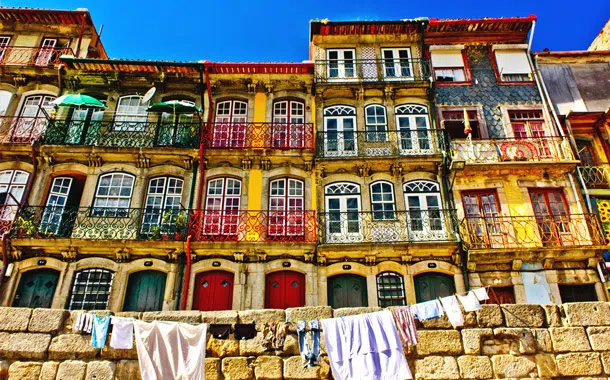
Oporto
At the mouth of the Rio Douro, the hilly city of Porto presents a mix of styles, eras and attitudes: narrow medieval alleys, extravagant Baroque churches, small squares and wide avenues, flanked by stately buildings.
The heart of Oporto is the Ribeira district, an area declared a UNESCO World Heritage Site made up of winding alleys, zigzagging stairs and churches on every corner, village-style squares and old merchants' houses where Roman ruins are hidden under the foundations. In the last two decades Porto has undergone a remarkable rebirth – which is expressed in the buzz of its efficient metro system and the shimmering of some ambitious urban renewal projects. The crowning of the city's glories are the two latest masterpieces, Museu de Arte Contemporânea by Álvaro Siza Vieira and the 'Casa da Música, which have transformed the city into a place of pilgrimage for architecture enthusiasts.
The Dom Luís I bridge an audacious iron arch, which crosses the Douro river, is impressive and not to be missed. It was built by the Belgian engineer Théophile Seyrig, for road traffic. Since 2003 the upper level has been used exclusively by the city's metro trams.
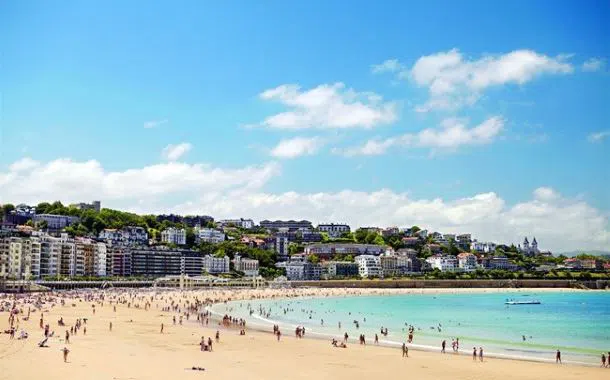
Bilbao
Bilbao, located on the Northern coast of Iberian Peninsula, is the ideal starting point to visit this area of Spain. Tourists come here to enjoy the beaches, discover its culture and absorb its mild climate. With one of Europe's largest ports, the vibrant city has been able to invest in a redevelopment plan, trasforming its brownfield sites into cutting-edge cultural and architectural venues.
But it is its historic center, which continues to fascinate with its stores, alleys and monuments. The city was officially founded in the 1300s, consolidating its economic position. Thanks to the exploitation of mining and steel industry areas, port and ship activity and its financial center, the city became one of the most important cities during the Industrial Revolution.
A modern and transportation network connects Bilbao to other cities in Spain. Thanks to its beautiful beaches, the city is the ideal destination for beach lovers. Beaches are not the only attractions in Bilbao, there are very fascinating places besides the beautiful beaches: the Cathedral of Santiago, located in the heart of the Old Town (Casco Viejo) is dedicated to the apostle Santiago, the official patron saint of the city of Bilbao since 1643.
Built at the end of the 14th century in the Gothic style, the neo-Gothic tower and façade were made by Severino Achúcarro in late 1887. The Old Bridge of San Antonio is located next to the church of the same name. Pablo de Alzola and Ernesto Hoffmeyer built a second bridge in 1877 but it was destroyed during the Civil War in 1937. San Antonio Bridge dates from the early 20th century, also known as the Atxuri Bridge, connecting the old neighborhood to the rest of the city. For nature lovers, the city is surrounded by a fertile landscape of forests, mountains, beaches, and cliffs that make Bilbao a tourist destination. A holiday aboard a cruise offers the opportunity to visit this beautiful city and partecipate in one of these unique activities.
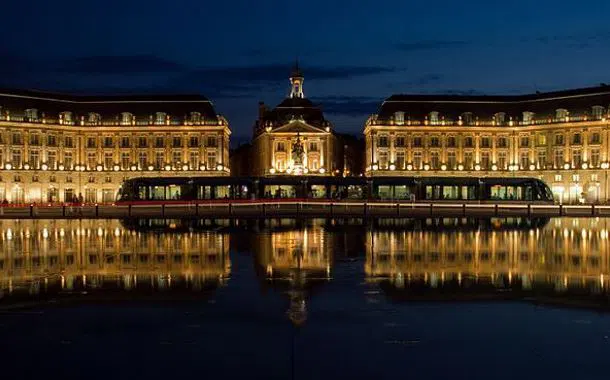
Bordeaux
Bordeaux is city on the Atlantic Ocean and its port hosts big ships. The city had initially the name Burdigala and was established in III Century B.C. by the Gallic people.
It was a neuralgic centre for the International commerce of tin and lead. After the arrival of the Romans, Bordeaux becomes one of the richest cities of Gallia and is robbed many times by populations such as Visigoths and Vandals. With the passing of time, the City starts economic relationships with England trading in salt and wine and, in XVI Century, also the colonial sugar and slaves start having a leading role in the sustenance of the city.
Bordeaux has a liveable city centre that can be visited by foot and that offers beautiful attractions and energy. At night, the city get crowded with young people filling up the main squares and the bars where you can taste excellent wines and plunge in the romantic atmosphere that the city assumes after the sunset. You can’t miss out Château de la Brède, a gothic style castle dated back to XIV Century, surrounded by a moat and an English garden. The philosopher Montesquieu lived here and tourists can visit his library and his bedroom that are just like they were in XIX Century.
We suggest to visit also the beautiful Saint Eloi Church. Established in XII Century, the construction and renovation works lasted until 1400’s. The current structure is dated back to this period. The church is one of the stop-overs of Santiago de Compostela walking tour and is part of UNESCO World Heritage. Bordeaux offers a wide variety of gastronomic and wine choices. There are many restaurants and bars where you can taste the best wines on the market and an amazing cuisine.

Bordeaux
Bordeaux is city on the Atlantic Ocean and its port hosts big ships. The city had initially the name Burdigala and was established in III Century B.C. by the Gallic people.
It was a neuralgic centre for the International commerce of tin and lead. After the arrival of the Romans, Bordeaux becomes one of the richest cities of Gallia and is robbed many times by populations such as Visigoths and Vandals. With the passing of time, the City starts economic relationships with England trading in salt and wine and, in XVI Century, also the colonial sugar and slaves start having a leading role in the sustenance of the city.
Bordeaux has a liveable city centre that can be visited by foot and that offers beautiful attractions and energy. At night, the city get crowded with young people filling up the main squares and the bars where you can taste excellent wines and plunge in the romantic atmosphere that the city assumes after the sunset. You can’t miss out Château de la Brède, a gothic style castle dated back to XIV Century, surrounded by a moat and an English garden. The philosopher Montesquieu lived here and tourists can visit his library and his bedroom that are just like they were in XIX Century.
We suggest to visit also the beautiful Saint Eloi Church. Established in XII Century, the construction and renovation works lasted until 1400’s. The current structure is dated back to this period. The church is one of the stop-overs of Santiago de Compostela walking tour and is part of UNESCO World Heritage. Bordeaux offers a wide variety of gastronomic and wine choices. There are many restaurants and bars where you can taste the best wines on the market and an amazing cuisine.

Bordeaux
Bordeaux is city on the Atlantic Ocean and its port hosts big ships. The city had initially the name Burdigala and was established in III Century B.C. by the Gallic people.
It was a neuralgic centre for the International commerce of tin and lead. After the arrival of the Romans, Bordeaux becomes one of the richest cities of Gallia and is robbed many times by populations such as Visigoths and Vandals. With the passing of time, the City starts economic relationships with England trading in salt and wine and, in XVI Century, also the colonial sugar and slaves start having a leading role in the sustenance of the city.
Bordeaux has a liveable city centre that can be visited by foot and that offers beautiful attractions and energy. At night, the city get crowded with young people filling up the main squares and the bars where you can taste excellent wines and plunge in the romantic atmosphere that the city assumes after the sunset. You can’t miss out Château de la Brède, a gothic style castle dated back to XIV Century, surrounded by a moat and an English garden. The philosopher Montesquieu lived here and tourists can visit his library and his bedroom that are just like they were in XIX Century.
We suggest to visit also the beautiful Saint Eloi Church. Established in XII Century, the construction and renovation works lasted until 1400’s. The current structure is dated back to this period. The church is one of the stop-overs of Santiago de Compostela walking tour and is part of UNESCO World Heritage. Bordeaux offers a wide variety of gastronomic and wine choices. There are many restaurants and bars where you can taste the best wines on the market and an amazing cuisine.
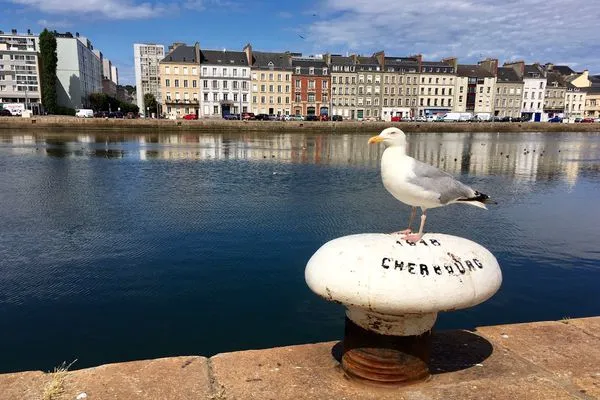
Cherbourg
Cross the Atlantic from Cherbourg!Set sail on an epic ocean adventure from Cherbourg, France, a historic port city with a deep connection to maritime exploration. Known for its strategic location and impressive harbor, Cherbourg offers a grand departure point for transatlantic voyages and European cruises. Experience the allure of French coastal charm before embarking on a journey promising elegance, discovery, and breathtaking views of the open sea.
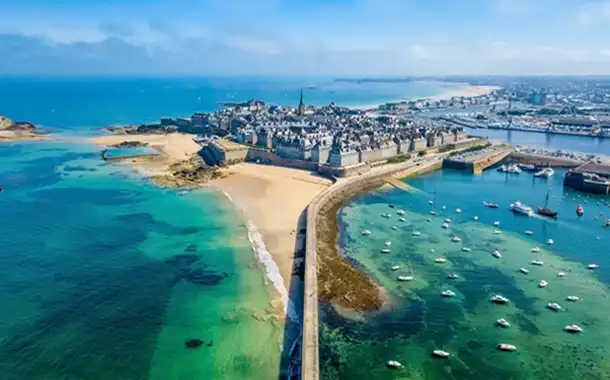
St Malo
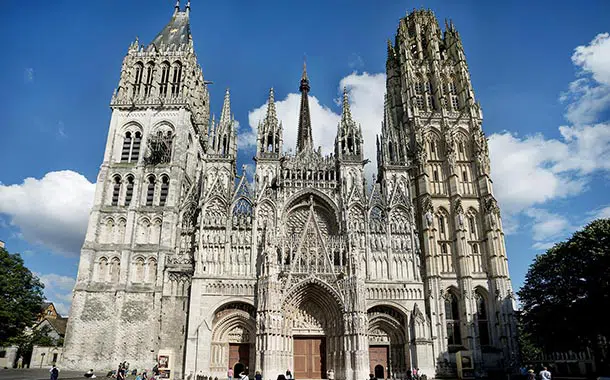
Rouen
Discover Rouen with an unforgettable cruiseRouen, the historic capital of Normandy, is one of the most fascinating stops for those who choose to go on a cruise from France. Rich in art, history and culture, this city offers numerous attractions to visit, unique flavors to discover and a strategic position for exploring the region.
What to see in Rouen?Rouen Cathedral is undoubtedly one of the most recognizable symbols of the city. This Gothic masterpiece, painted by Claude Monet, is an icon of Normandy and one of the tallest cathedrals in France. Walking through the streets of Rouen, you cannot miss the Gros Horloge, a medieval astronomical clock that is located in the heart of the city. Another unmissable attraction is the Joan of Arc Church, built on the site where the saint was executed in 1431.
Where is Rouen located?Rouen is located in the north of France, about 135 km from Paris, along the Seine River. Thanks to its strategic position, it is one of the most important port cities in Normandy, making it an ideal starting point for river cruises along the Seine or maritime cruises to the United Kingdom and Scandinavia.
What to do in Rouen in a day?If you only have one day available in Rouen before your cruise, you can organize an itinerary that allows you to see the best of the city. Start with a visit to the Rouen Cathedral and continue with a walk in the historic quarter, famous for its half-timbered houses. Stop at the Old Market, where you can sample local products and see the church dedicated to Joan of Arc. End the day with a walk along the Seine, admiring the sunset over the river.
What to eat in Rouen?Normandy cuisine is famous for its fresh and flavorful ingredients. Among the typical dishes to try is the Canard à la Rouennaise, a duck recipe cooked with a wine sauce. Don't forget to taste the local cheeses, such as Camembert and Neufchâtel, accompanied by a good bottle of cider, the traditional drink of the region.
Discover everything that Rouen has to offer and start your cruise adventure from one of the most fascinating cities in France!
Rouen
Discover Rouen with an unforgettable cruiseRouen, the historic capital of Normandy, is one of the most fascinating stops for those who choose to go on a cruise from France. Rich in art, history and culture, this city offers numerous attractions to visit, unique flavors to discover and a strategic position for exploring the region.
What to see in Rouen?Rouen Cathedral is undoubtedly one of the most recognizable symbols of the city. This Gothic masterpiece, painted by Claude Monet, is an icon of Normandy and one of the tallest cathedrals in France. Walking through the streets of Rouen, you cannot miss the Gros Horloge, a medieval astronomical clock that is located in the heart of the city. Another unmissable attraction is the Joan of Arc Church, built on the site where the saint was executed in 1431.
Where is Rouen located?Rouen is located in the north of France, about 135 km from Paris, along the Seine River. Thanks to its strategic position, it is one of the most important port cities in Normandy, making it an ideal starting point for river cruises along the Seine or maritime cruises to the United Kingdom and Scandinavia.
What to do in Rouen in a day?If you only have one day available in Rouen before your cruise, you can organize an itinerary that allows you to see the best of the city. Start with a visit to the Rouen Cathedral and continue with a walk in the historic quarter, famous for its half-timbered houses. Stop at the Old Market, where you can sample local products and see the church dedicated to Joan of Arc. End the day with a walk along the Seine, admiring the sunset over the river.
What to eat in Rouen?Normandy cuisine is famous for its fresh and flavorful ingredients. Among the typical dishes to try is the Canard à la Rouennaise, a duck recipe cooked with a wine sauce. Don't forget to taste the local cheeses, such as Camembert and Neufchâtel, accompanied by a good bottle of cider, the traditional drink of the region.
Discover everything that Rouen has to offer and start your cruise adventure from one of the most fascinating cities in France!
Rouen
Discover Rouen with an unforgettable cruiseRouen, the historic capital of Normandy, is one of the most fascinating stops for those who choose to go on a cruise from France. Rich in art, history and culture, this city offers numerous attractions to visit, unique flavors to discover and a strategic position for exploring the region.
What to see in Rouen?Rouen Cathedral is undoubtedly one of the most recognizable symbols of the city. This Gothic masterpiece, painted by Claude Monet, is an icon of Normandy and one of the tallest cathedrals in France. Walking through the streets of Rouen, you cannot miss the Gros Horloge, a medieval astronomical clock that is located in the heart of the city. Another unmissable attraction is the Joan of Arc Church, built on the site where the saint was executed in 1431.
Where is Rouen located?Rouen is located in the north of France, about 135 km from Paris, along the Seine River. Thanks to its strategic position, it is one of the most important port cities in Normandy, making it an ideal starting point for river cruises along the Seine or maritime cruises to the United Kingdom and Scandinavia.
What to do in Rouen in a day?If you only have one day available in Rouen before your cruise, you can organize an itinerary that allows you to see the best of the city. Start with a visit to the Rouen Cathedral and continue with a walk in the historic quarter, famous for its half-timbered houses. Stop at the Old Market, where you can sample local products and see the church dedicated to Joan of Arc. End the day with a walk along the Seine, admiring the sunset over the river.
What to eat in Rouen?Normandy cuisine is famous for its fresh and flavorful ingredients. Among the typical dishes to try is the Canard à la Rouennaise, a duck recipe cooked with a wine sauce. Don't forget to taste the local cheeses, such as Camembert and Neufchâtel, accompanied by a good bottle of cider, the traditional drink of the region.
Discover everything that Rouen has to offer and start your cruise adventure from one of the most fascinating cities in France!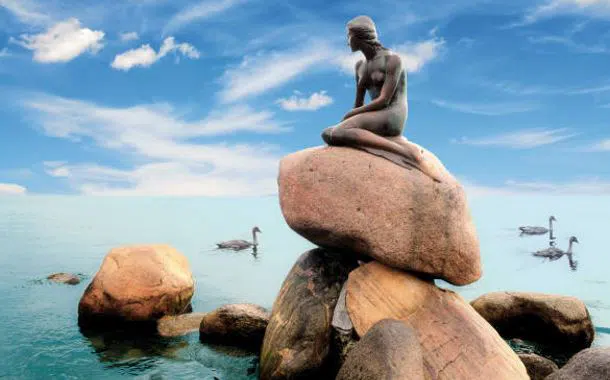
Copenaghen
Copenhagen, literally "port of the merchants", is the capital of Denmark and one of the country's most densely populated cities. Originally a city mainly inhabited by fishermen, it became a fundamentally important port for trade.
Copenhagen is a year-round tourist destination and in summer the flow of tourists increases considerably thanks to Northern Europe cruises.
It is very common to add a stay in the city before a cruise, to take in its distinguishing relaxing atmosphere and see what it has to offer. Among its famous attractions you cannot miss the statue of the Mermaid which is located right at the entrance to the port and the Tivoli Gardens, one of the world's largest amusement parks, opened in 1843 and loved by everyone.
Copenhagen (København in Danish and 'Copenaga' in Italian [no source]) is the capital and the most populous city of Denmark with 518,574 inhabitants in the municipality (1,167,569 in the urban area). The city stretches across the islands of Sjælland and Amager and is separated from the city of Malmö in Sweden by the strait of Øresund.
